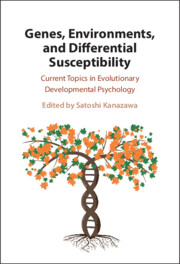 Genes, Environments, and Differential Susceptibility
Genes, Environments, and Differential Susceptibility Book contents
- Genes, Environments, and Differential Susceptibility
- Genes, Environments, and Differential Susceptibility
- Copyright page
- Contents
- Figures
- Tables
- Contributors
- Introduction
- Part I Historical Background and Theoretical Foundations of Jay Belsky’s Work in Evolutionary Developmental Psychology
- Part II Parent–Child Relations and Attachment
- Part III Life-Course Development from Prenatal Environment through Childhood to Adulthood
- Part IV Differential Susceptibility to Environmental Influences
- Chapter 9 Unequal Monks, Unequal Hoods?
- Chapter 10 Child Maltreatment and the Development of Multisystem Resilience
- Chapter 11 Differential Susceptibility and Its Usefulness for the Understanding of Crime and the Rehabilitation of Criminals
- Conclusion
- Afterword
- Biography of Jay Belsky
- Index
- References
Chapter 11 - Differential Susceptibility and Its Usefulness for the Understanding of Crime and the Rehabilitation of Criminals
from Part IV - Differential Susceptibility to Environmental Influences
Published online by Cambridge University Press: 04 September 2025
- Genes, Environments, and Differential Susceptibility
- Genes, Environments, and Differential Susceptibility
- Copyright page
- Contents
- Figures
- Tables
- Contributors
- Introduction
- Part I Historical Background and Theoretical Foundations of Jay Belsky’s Work in Evolutionary Developmental Psychology
- Part II Parent–Child Relations and Attachment
- Part III Life-Course Development from Prenatal Environment through Childhood to Adulthood
- Part IV Differential Susceptibility to Environmental Influences
- Chapter 9 Unequal Monks, Unequal Hoods?
- Chapter 10 Child Maltreatment and the Development of Multisystem Resilience
- Chapter 11 Differential Susceptibility and Its Usefulness for the Understanding of Crime and the Rehabilitation of Criminals
- Conclusion
- Afterword
- Biography of Jay Belsky
- Index
- References
Summary
Despite widespread integration of genetic research by most disciplines, genetics has largely been excised by the field of criminology, a field that continues to be guided almost exclusively by a sociological paradigm. Part of the reason for why genetic research has not been synthesized into the criminological scholarship is due to concerns about the policy implications that might flow directly from it. Specifically, critics of genetic and biosocial research routinely argue that studying the genetic basis to criminality likely would lead to oppressive crime-control policies and perhaps even a new eugenics movement. If criminologists had an accurate understanding of how genetic influences relate to criminal involvement, then these concerns would largely be assuaged. Against this backdrop, the current chapter uses Belsky’s differential susceptibility model as the centerpiece to show that genetic research is not only useful in understanding the etiology of criminal involvement but also that it holds great promise in guiding the development of crime prevention and rehabilitation programs.
Information
- Type
- Chapter
- Information
- Genes, Environments, and Differential SusceptibilityCurrent Topics in Evolutionary Developmental Psychology, pp. 235 - 250Publisher: Cambridge University PressPrint publication year: 2025
References
Accessibility standard: WCAG 2.0 A
Why this information is here
This section outlines the accessibility features of this content - including support for screen readers, full keyboard navigation and high-contrast display options. This may not be relevant for you.Accessibility Information
Content Navigation
Allows you to navigate directly to chapters, sections, or non‐text items through a linked table of contents, reducing the need for extensive scrolling.
Provides an interactive index, letting you go straight to where a term or subject appears in the text without manual searching.
Reading Order & Textual Equivalents
You will encounter all content (including footnotes, captions, etc.) in a clear, sequential flow, making it easier to follow with assistive tools like screen readers.
You get concise descriptions (for images, charts, or media clips), ensuring you do not miss crucial information when visual or audio elements are not accessible.
You get more than just short alt text: you have comprehensive text equivalents, transcripts, captions, or audio descriptions for substantial non‐text content, which is especially helpful for complex visuals or multimedia.
Visual Accessibility
You will still understand key ideas or prompts without relying solely on colour, which is especially helpful if you have colour vision deficiencies.
You benefit from high‐contrast text, which improves legibility if you have low vision or if you are reading in less‐than‐ideal lighting conditions.